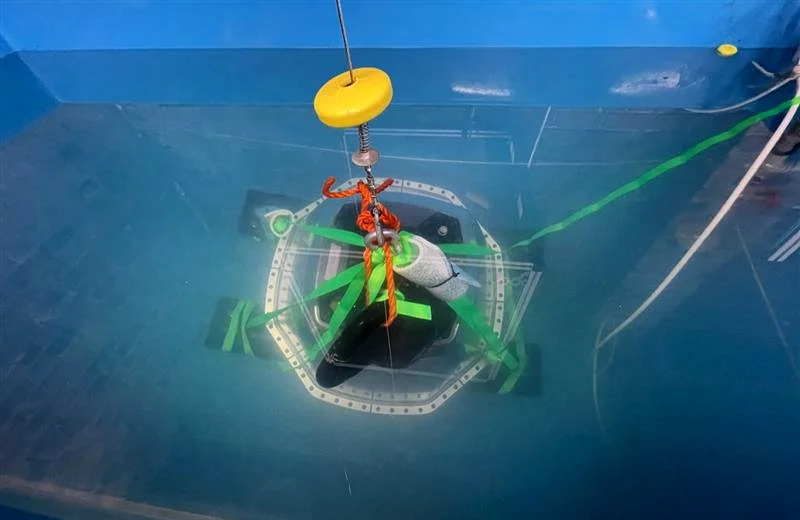Navigating the Maritime Drone Frontier: Building Resilient Naval Counter-UAS Protection
Angus Bean, Chief Product Officer, DroneShield
Modern naval defense has entered into uncharted waters. The emerging drone threat at sea-from small, off-the-shelf quadcopters spying near naval docks, coordinated aerial incursions over fleet operations, has exposed new vulnerabilities across maritime security environments. These challenges thrive in the littoral zone, those near-shore and harbor regions where ships, submarines, and critical infrastructure converge. The result is a challenge that demands both technological precision and environmental durability in counter-unmanned aerial systems (CUAS) design.
The Expanding Maritime Drone Threat
Recent incidents have reinforced this growing concern. In June, two Chinese nationals were arrested in South Korea for repeatedly flying drones over a naval base hosting U.S. assets. Most recently, in October, others were detained in Norway for operating drones near a NATO F-35 air base.
Naval commanders now operate in an environment where commercial drone technology, global connectivity, and asymmetric tactics intersect. Hostile actors can use simple platforms for reconnaissance, harassment, or disrupt operational security. Every unauthorized flight, whether a docked destroyer or a fuel depot, reinforces the need for layered, networked CUAS coverage across both fleet and base perimeters.
A Global Wake-Up Call for Ship Defense
Analysts at the Center for Strategic and International Studies have called this maritime threat a “back to the future” moment—where the vulnerability of stationary or docked warships mirrors World War II-era risks, but with new technology that’s faster, cheaper, and swarm-enabled. At the same time, The Royal Institution of Naval Architects warns that cheap drones have replaced skiffs and IED boats as the preferred weapon against cargo ships, oil tankers, and naval assets.
In 2025 alone, maritime drone strikes have been reported across the Red Sea and Black Sea. These attacks demonstrate that the barrier to entry for hostile actors is vanishing. State and non-state groups alike are now able to threaten naval operations using commercial technology and satellite communications.
Environmental and Operational Challenges
Counter-UAS (CUAS) systems face a distinct set of challenges when deployed in maritime environments. Saltwater intrusion, galvanic corrosion, and electromagnetic reflection across the ocean surface can degrade sensor Performance. RF propagation shifts with humidity and surface conditions, while radar signals scatter off sea clutter, complicating target identification.
In the littoral water zone, where civilian and military traffic mix, precise identification, and controlled defeat effects are critical. Inside naval bases, a drone incident can escalate from a minor, low visibility intrusion to a full operational compromise in minutes if detection and response networks are not synchronized.
Image: DroneShield’s counter-drone technology designed to withstand harsh environments
Engineering Resilience for Maritime Defense
True maritime resilience begins with design. For shipboard and shore based CUAS systems, survivability depends on engineering that matches naval operating standards: watertight integrity, corrosion resistance, vibration damping, and persistent functionality through pitch and roll. Equipment must also be rated for ingress protection, withstand shock.
DroneShield’s DroneSentry-X Mk2 was designed with those principles at the forefront. Its architecture provides a ruggedized, IP67 rated counter-UAS capability that can operate topside aboard patrol craft, cutters, or auxiliary vessels without degradation under spray or storm exposure. The single detection and disruption solution is mountable to the mast, bridge wing, or paired with a shock and vibration isolator.
Multi-Domain Awareness and Fleet Integration
Where older systems rely on static frequency libraries or manual operator input, the DroneSentry-X Mk2 incorporates adaptive Radio Frequency AI (RFAI), learning from every engagement.
It’s more than a technology upgrade; it’s a shift toward doctrinal readiness. As surface action groups, logistics flotillas, and amphibious task forces operate increasingly close to contested coasts; persistent CUAS coverage becomes essential as traditional radar watch or electronic support measures.
Naval Base Protection: Lessons from Operation Spider Web and Rising Lion
Both Operation Spider Web and Rising Lion have reshaped the understanding of base and fleet vulnerability in the modern era. Though conducted in different theaters, each exposed how drones, when networked, autonomous, and unpredictable, can compress the battlespace and overwhelm static defenses.
A Call to Maritime Readiness
Fleet commanders across NATO, the Indo-Pacific, and AUKUS alliances recognize that the next littoral confrontation may originate from an inexpensive drone skimming wavetops or loitering at mast height. To counter that, every deck plate and harbor wall must be protected by systems hardened for the maritime fight-those that can breathe salt air, take green water over the bow, and keep detecting.
DroneSentry-X Mk2 embodies the ethos of naval resilience. Born of operational experience and engineered for the world’s harshest maritime theaters, it represents the next generation of shipborne situational awareness-ready to safeguard hulls, crews, and mission assurance wherever the fleet drops anchor.
Image: DroneShield’s DroneSentry-X Mk2 during submersible testing



